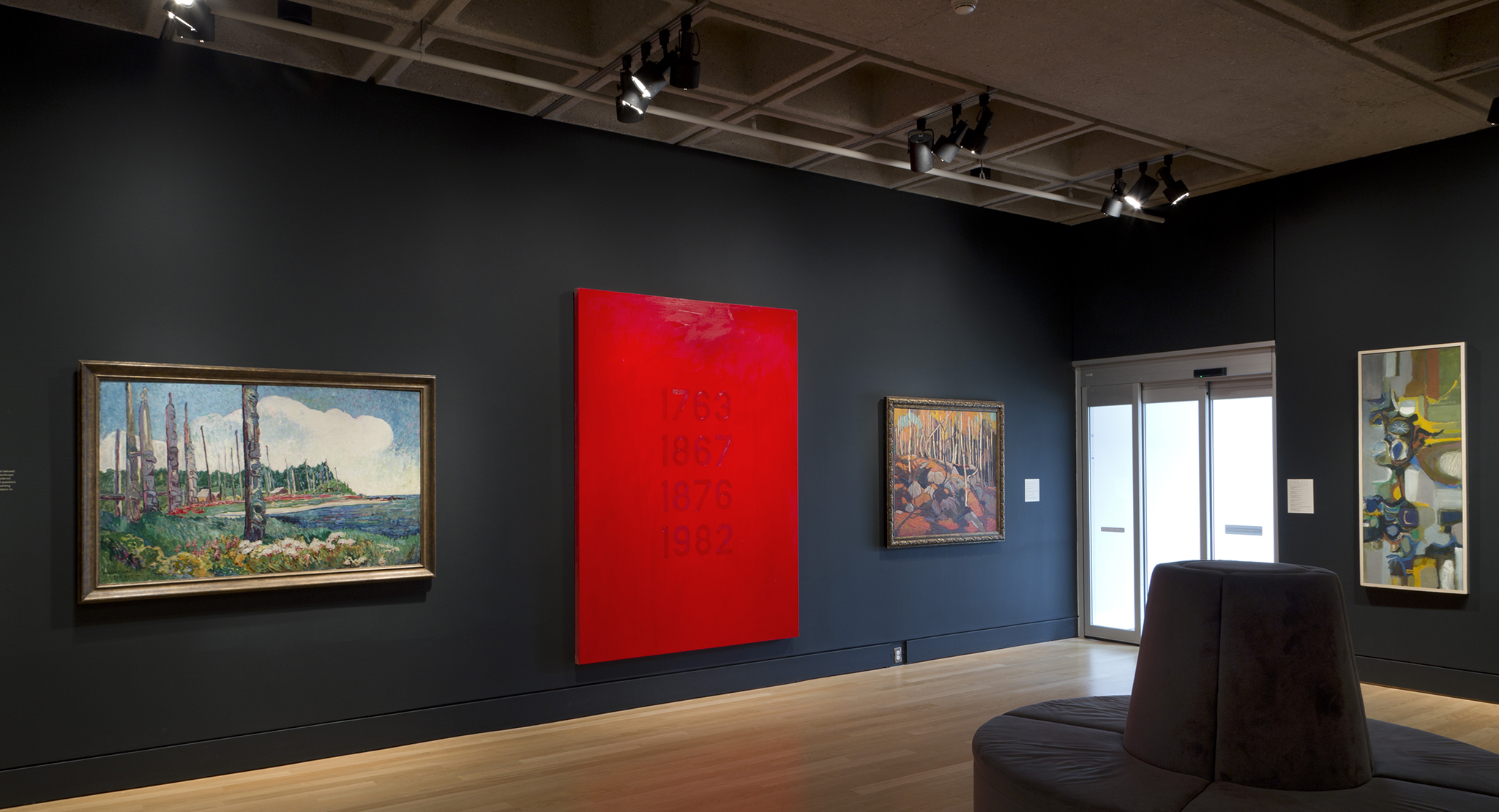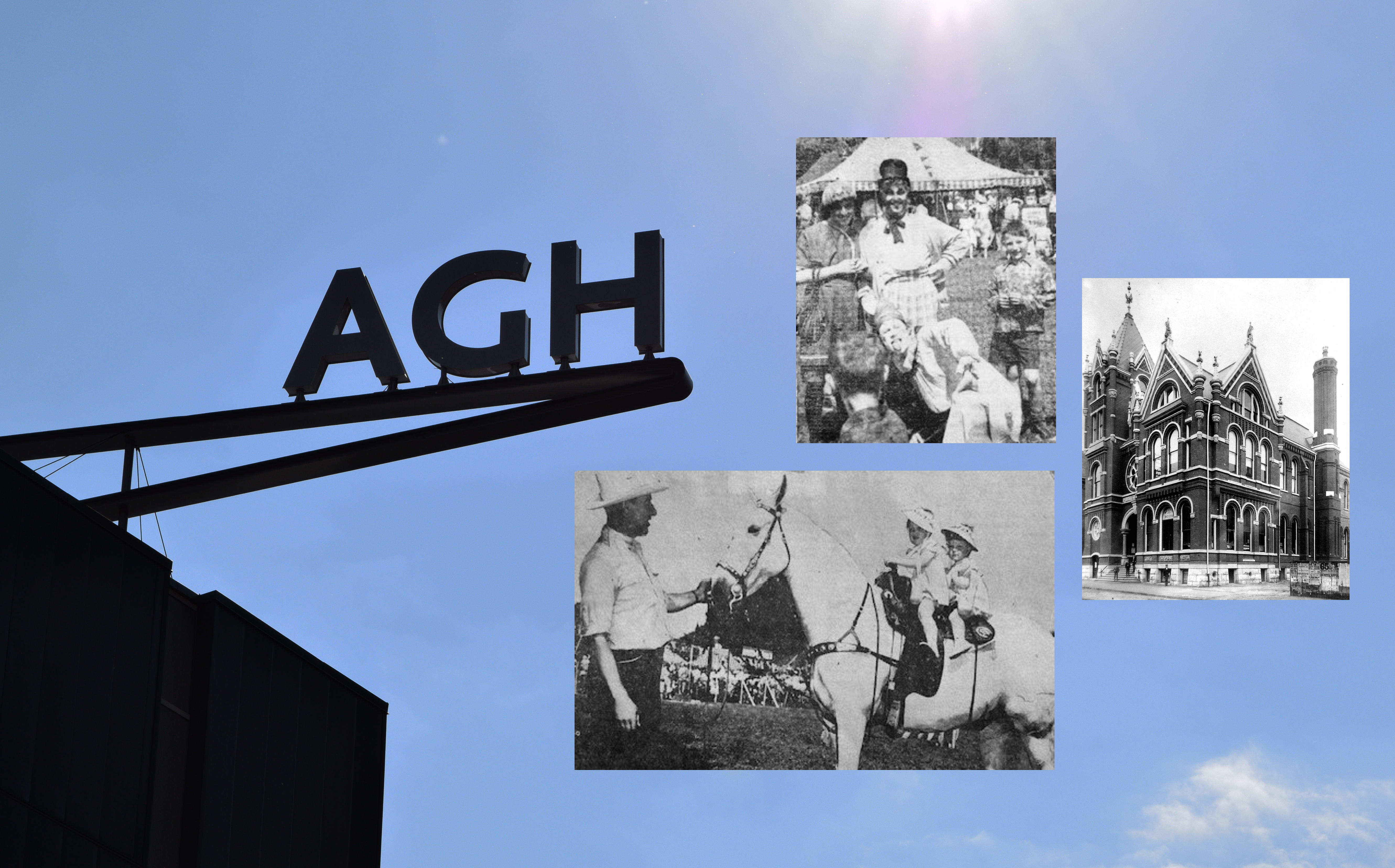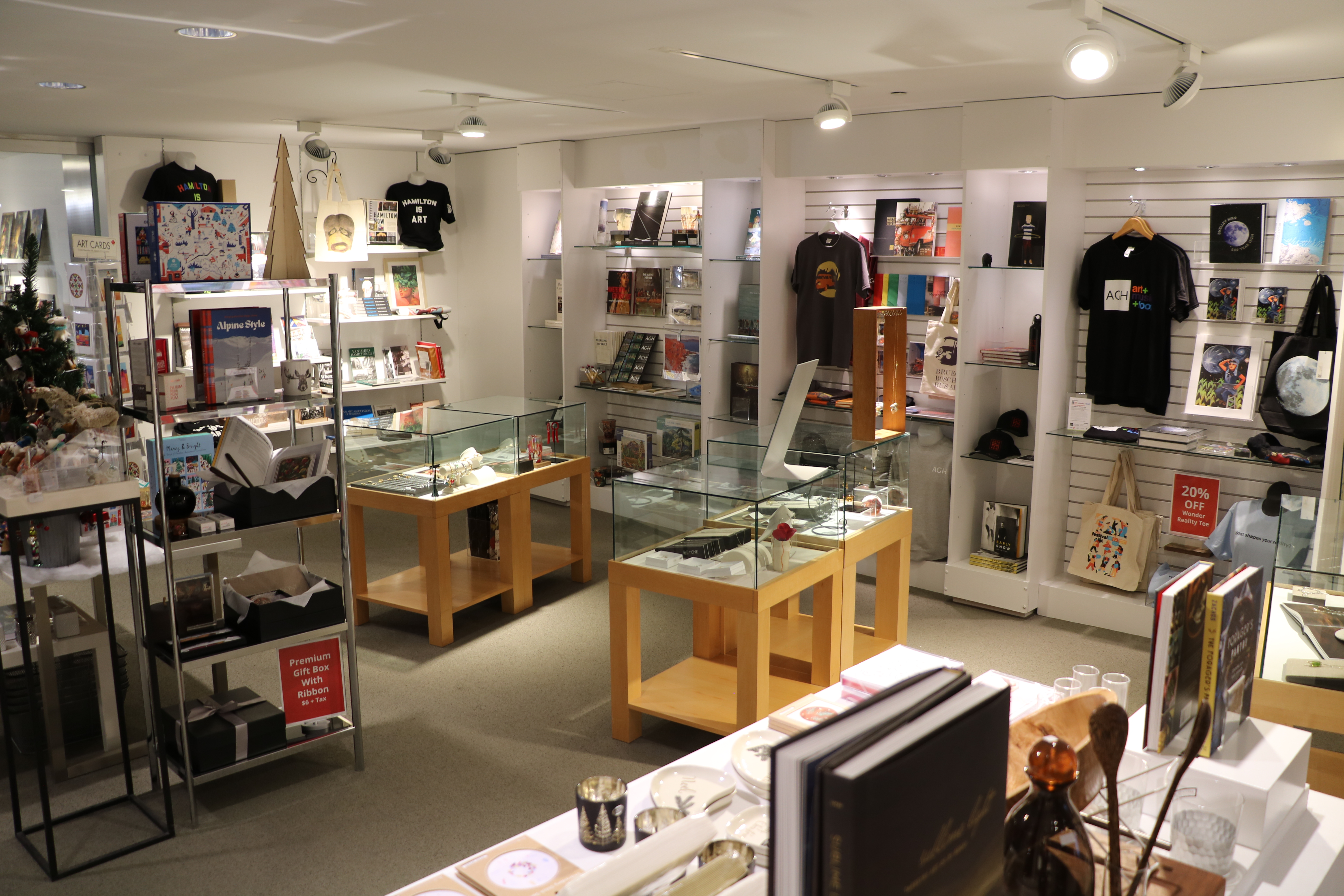Here at the AGH, we are very proud of the collection of artworks we are fortunate enough to hold in our care. From the over 10,000 pieces in our collection, we have selected a sampling to display in our exhibition The Collection on Gallery Level 2, accessible and free to everyone!
Exploring a piece from this exhibition, today’s Collection Showcase looks at Saulteaux artist Robert Houle’s (b. 1947) work Kanehsatake (1990–93) and Aboriginal Title (1989-1990), two direct responses to important moments in Indigenous resistance in Canada.
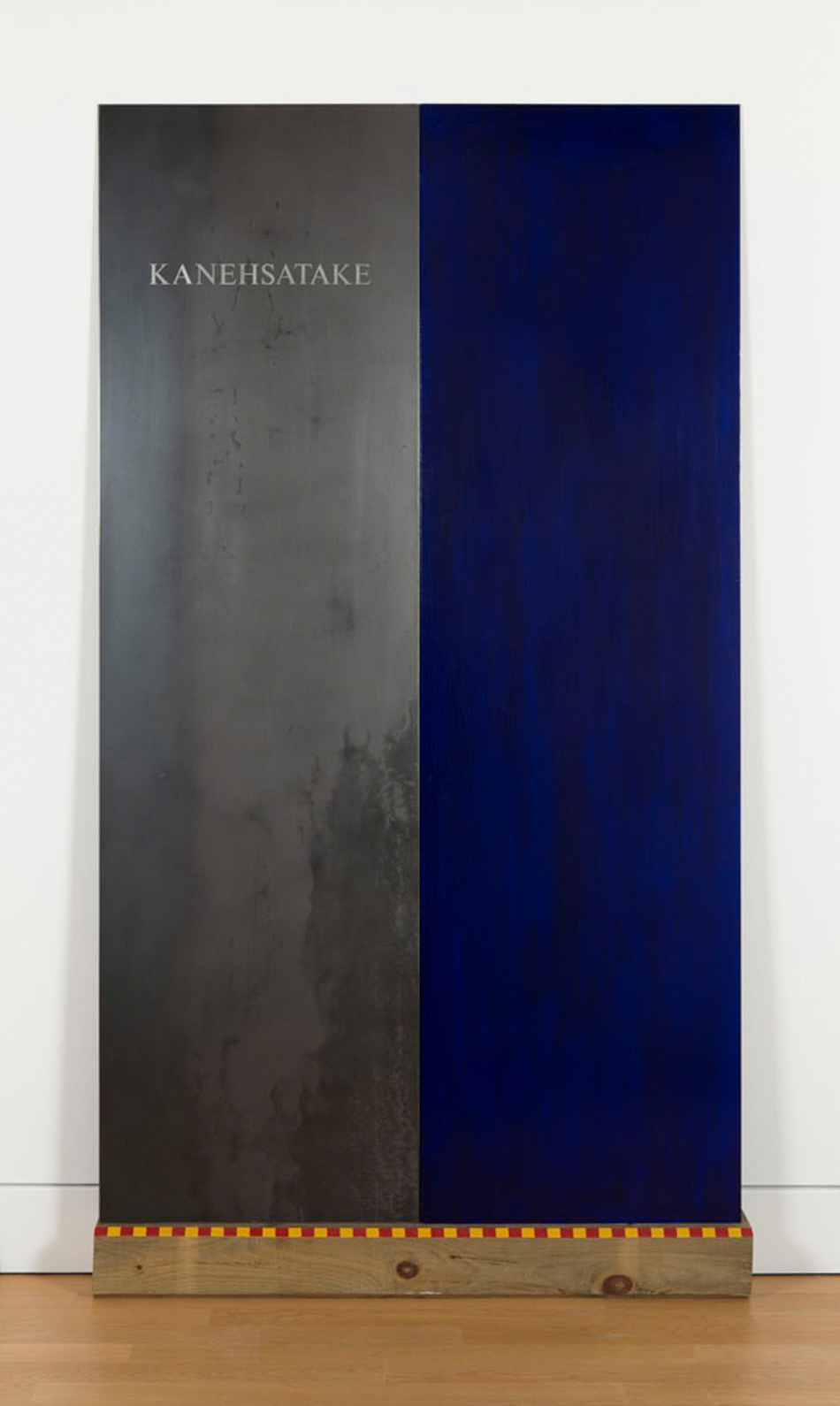
An accomplished artist, curator, writer, and educator, Robert Houle leads a multi-faceted career exploring the nuances of history, identity, and conflict. A residential school survivor, Houle creates work that combines the preservation of Indigenous history with a thoughtful contemporary lens. Former Chief Curator at the AGH (and now Executive Director of the Kitchener-Waterloo Art Gallery), Shirley Madill, notes that “[Houle’s] aim is to assert identity as an artist through an honourable synthesis of cultures without compromising Native traditions or surrendering the memory of the ‘ancient ones.’”[1] Professionally, Houle used this aim to accomplish much as the first Indigenous curator of contemporary Indigenous art at the Canadian Museum of Civilization (now Canadian Museum of History), and also as the first professor of Indigenous Studies at Ontario College of Art & Design, mentoring the likes of contemporary artists Shelley Niro (b. 1954) and Bonnie Devine (b. 1952). Artistically, his perspective and experience strengthen his ability to make powerful public statements on contemporary issues.
Responding to the Oka Crisis (1990), ongoing at the time of Kanehsatake’s creation, the work looms over onlookers, standing tall and constructed of the sturdy materials of steel and wood. Pointing directly to a site of resistance between Indigenous peoples and the Canadian police and army, Houle etches the name of the Mohawk settlement at the centre of the dispute. Madill notes that the work “signals the fight for one’s home in the shadow of the Oka Crisis, its strength as a place reinforced in the fact that the name is etched in steel.”[2] Mimicking street signage and caution symbols, Houle places this massive piece of steel on wood, and marks the wood with cautionary red and yellow stripes. The artist thus simultaneously confronts the space of the struggle, the colonial space as laid out through infrastructure, and the space of the art gallery in which the viewer approaches the work.
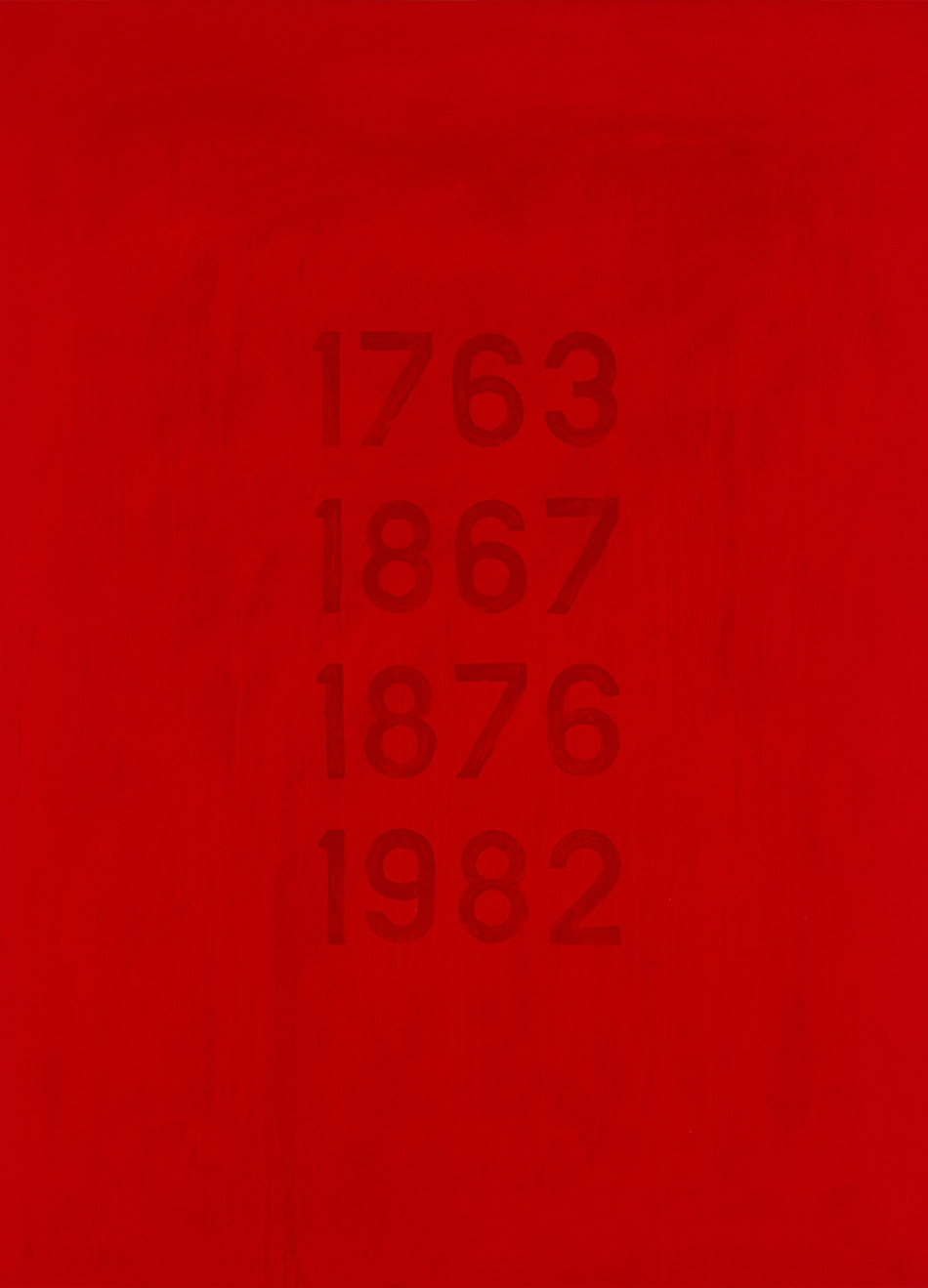
The use of a single, monochromatic colour block mirrors that of another Houle work on display, Aboriginal Title (1989–90). This seven-foot-tall work overwhelms the viewer with stark red numbers across an all-red background, presenting four important dates in the centuries-long relationship between European colonizers and Canadian First Nations peoples. Depicting the dates here echoes the etching of the settlement name in Kanehsatake, demonstrating Houle’s active hand in re-contextualizing these historical moments as belonging to Indigenous history. The title of the work itself is a word play on the ongoing injustice of land grants. Houle notes the cathartic quality of this effort, stating, “I began to talk to myself when I was painting, and then my body would decolonize itself with my voice.”[3]
“His painting functions as text in the absence of writing,” Houle’s mentee Bonnie Devine notes, “as history in the absence of official account.”[4] With these two works, Houle is working to re-shape our understandings of conflict as the events unfold.
Fascinated by the scope presented in these Houle works? Head to our Gallery Level 2 exhibition, The Collection, to see Kanehsatake and Aboriginal Title. Admission is free any day the Gallery is open. We plan to expand our display of collection works all year, so check in throughout 2020 to watch the exhibition grow!
[1] Shirley Madill, “Coming Home,” Robert Houle: Sovereignty over Subjectivity (Winnipeg: Winnipeg Art Gallery, 1999).
[2] Shirley Madill, “Coming Home,” Robert Houle: Sovereignty over Subjectivity (Winnipeg: Winnipeg Art Gallery, 1999).
[3] Hillary Windsor, “How Robert Houle ‘decolonized’ himself through painting,” The Coast, April 9, 2015, accessed January 24, 2020, https://www.thecoast.ca/halifax/how-robert-houle-decolonized-himself-through-painting/Content?oid=4586584
[4] Bonnie Devine, “Telling as Painting,” Robert Houle: Sovereignty over Subjectivity (Winnipeg: Winnipeg Art Gallery, 1999).
